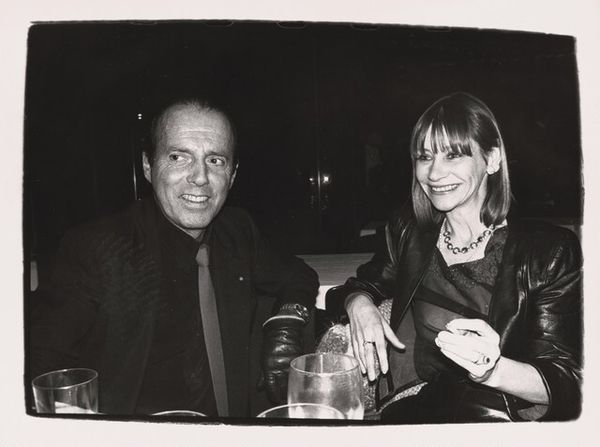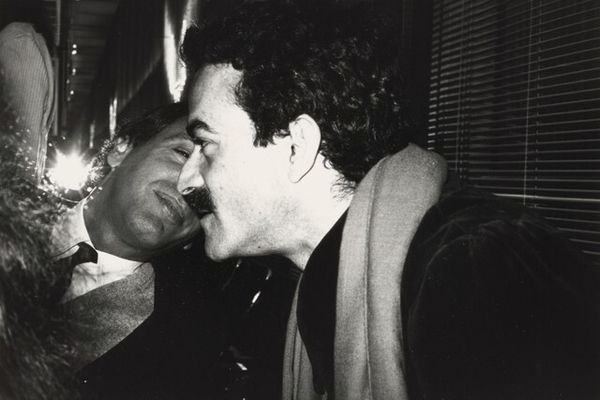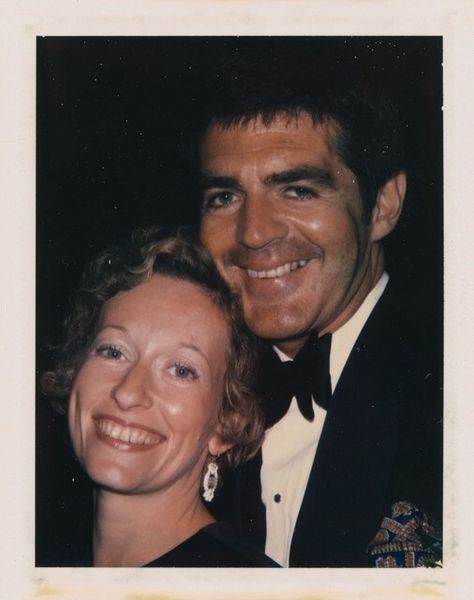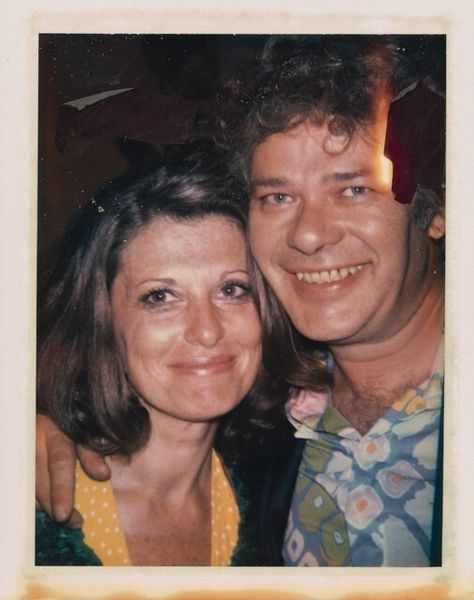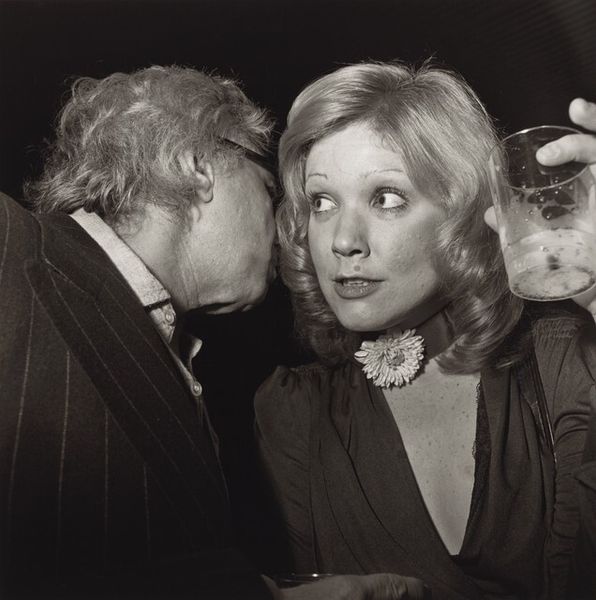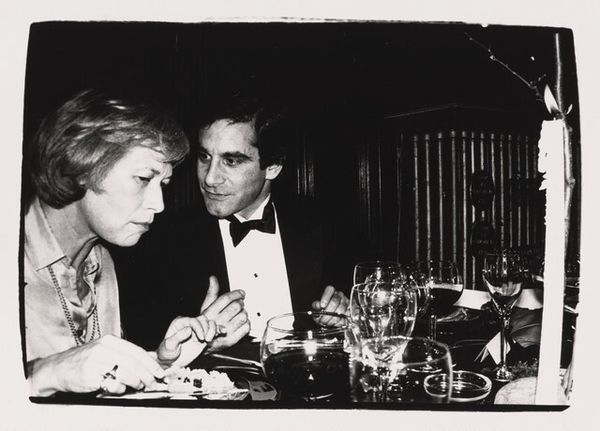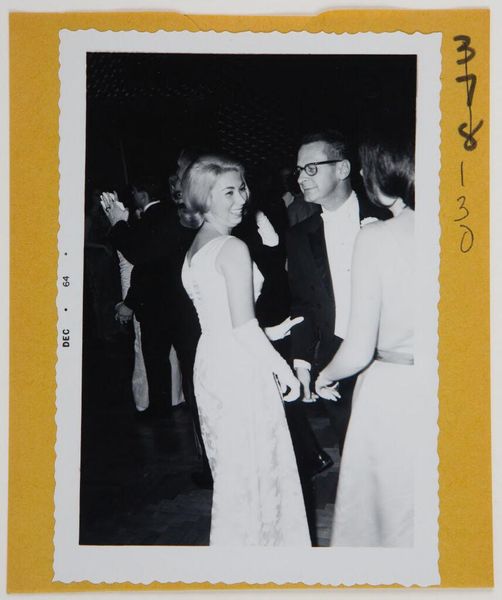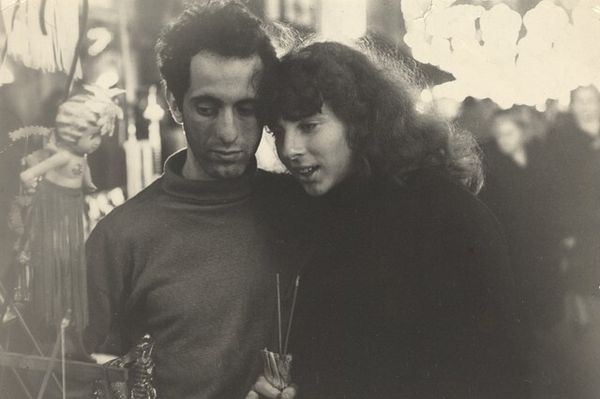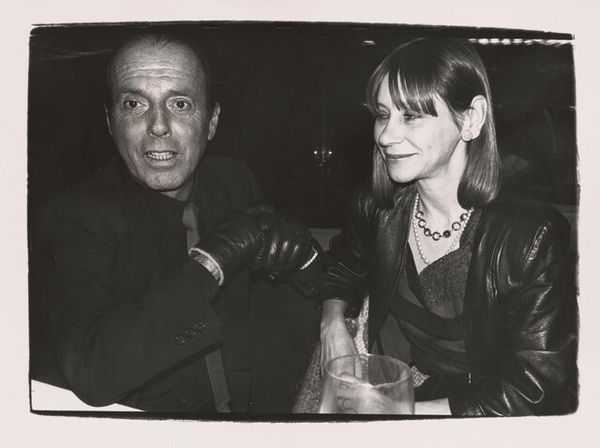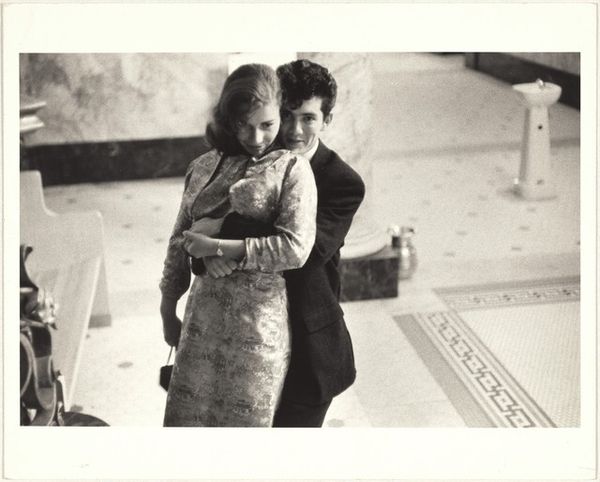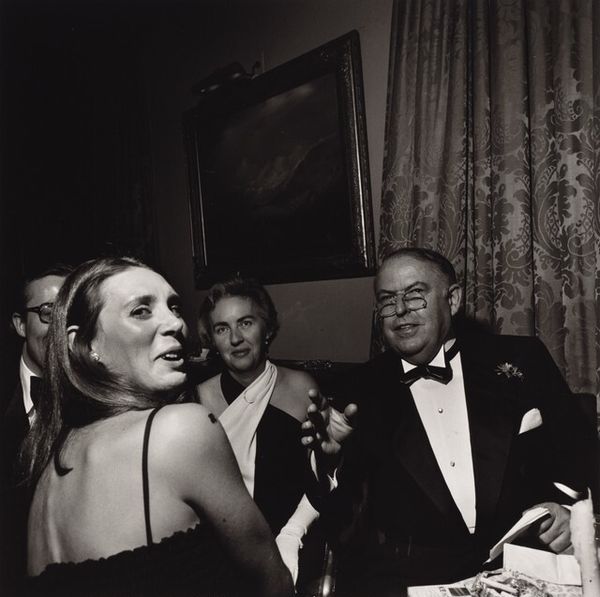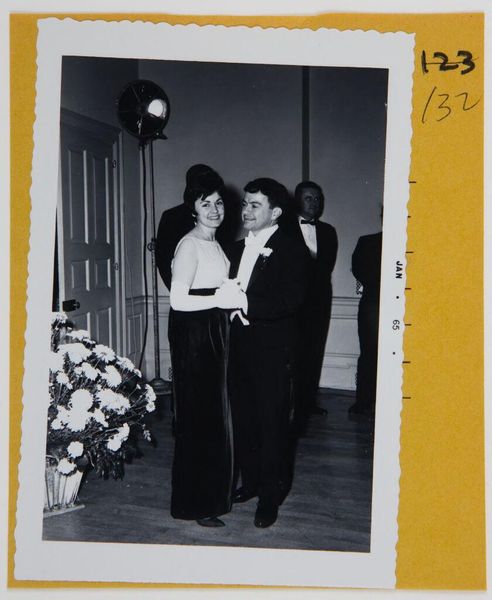
photography, gelatin-silver-print
#
portrait
#
photography
#
historical photography
#
gelatin-silver-print
#
pop-art
#
modernism
#
portrait photography
Dimensions: sheet/image: 25.3 × 20.1 cm (9 15/16 × 7 15/16 in.)
Copyright: National Gallery of Art: CC0 1.0
Editor: This is Andy Warhol’s gelatin silver print, "Neil Sedaka and Unidentified Woman", from around the 1970s. It has a candid, almost snapshot-like feel. What social commentary, if any, do you think Warhol might be making with a seemingly simple portrait like this? Curator: That's a keen observation. It appears simple, but Warhol's portraits often probe the cult of celebrity and its accessibility. He democratized portraiture, yet simultaneously critiqued the artificiality of fame. The 'unidentified woman' juxtaposed with Sedaka—what does this say about aspiration, access, and the transient nature of fame itself? What’s captured in this particular image that strikes you? Editor: The contrast is interesting. Sedaka is partially obscured by shadow, while the woman is brightly lit. Does the shadow perhaps represent fame’s darker sides, a kind of obfuscation? Curator: Precisely. Think about the historical context. Warhol was deeply embedded in social circles and navigated notions of what's valuable and visible in society. Do you see this interplay extending to aspects of gender within the image as well? The power dynamic implicit in who is seen, who is known? Editor: The woman seems positioned as almost clinging to Sedaka. Maybe there’s a statement here about the pressures on women to attach themselves to established male figures for validation or recognition? Curator: Absolutely, it invites us to question how gender, power, and fame intersect. Warhol, whether consciously or not, captures a dynamic that resonates far beyond a simple photograph. Consider, what conversations could this image start regarding women in creative spaces, back then and even today? Editor: I never considered all of these layers! I was focusing solely on the immediate visual. It’s so much more complex when seen through a sociocultural lens. Curator: And that's the beauty of art history—it’s a dialogue between what’s on the surface and the intricate web of social and political forces shaping our perceptions.
Comments
No comments
Be the first to comment and join the conversation on the ultimate creative platform.
